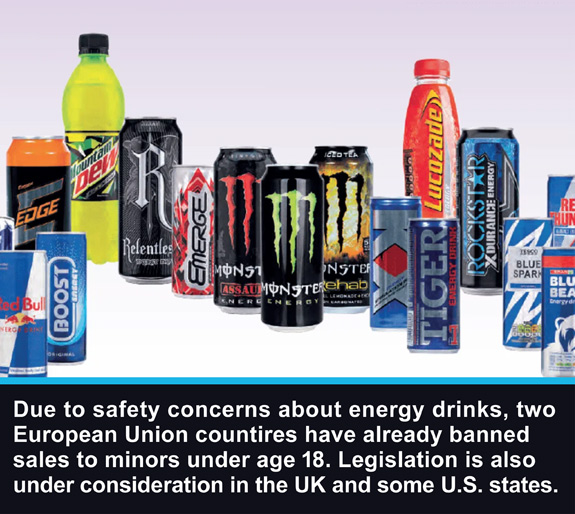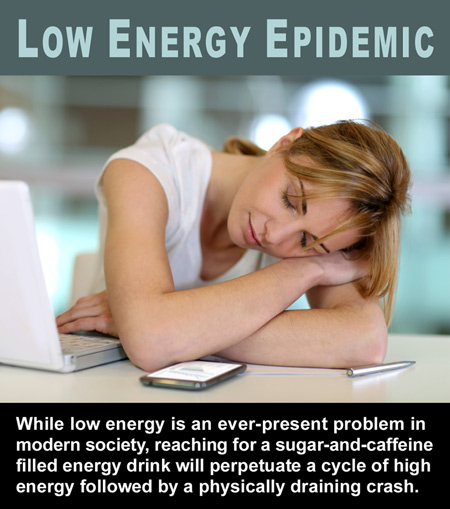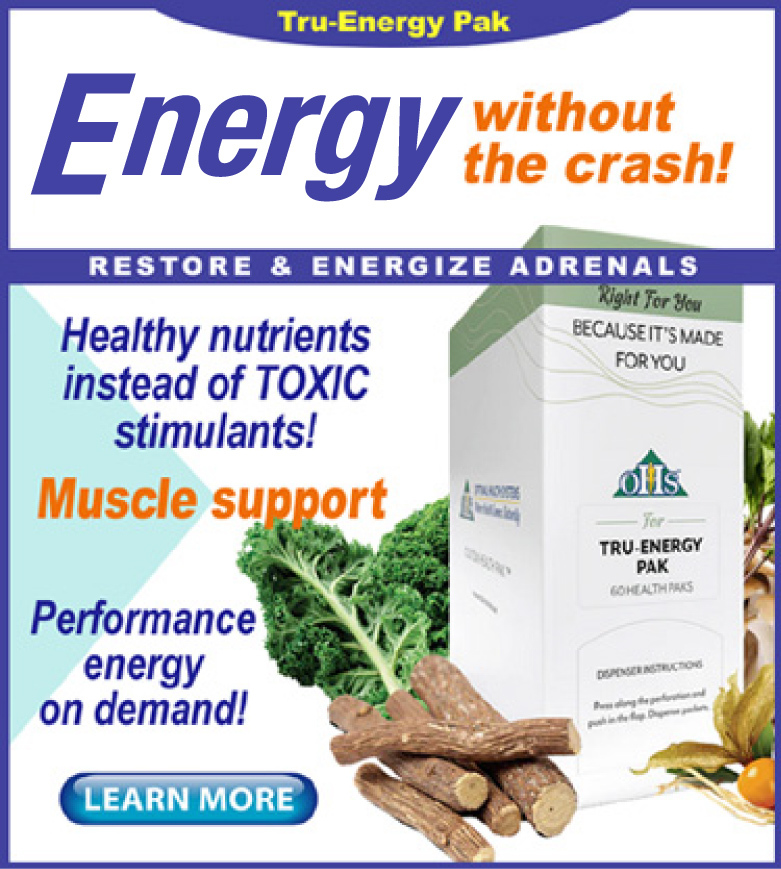During the past decade energy drinks have skyrocketed in popularity.
An energy drink is defined by JustAPedia as: “A type of drink containing stimulant compounds, usually caffeine, which is marketed as providing mental and physical stimulation (marketed as “energy”, but distinct from food energy).
“They may or may not be carbonated and may also contain sugar, other sweeteners, herbal extracts, taurine, and amino acids.”
Though not part of the energy recipe, energy drinks also typically contain liberal quantities of artificial flavors, preservatives and coloring agents.
A variety of options are available at every convenience store, grocery market and gas station—providing a quick fix for the millions of people who have difficulty getting through the day without a regular fix.
Red Bull, Five-Hour Energy and Monster are some of the most recognized energy drink brands.
For investors looking for a sure thing, energy drink companies appear to be a safe bet. According to market research companies the global energy drink market reached $90 billion in 2024, and is currently growing at about 8% annually.
But in the long-term it may be investors who sink their money in the healthcare industry who receive the biggest payout since ongoing research is revealing a growing list of health consequences related to regular energy drink consumption.
In 2017 researchers at the University of Maryland tracked over 1,000 college students over a five-year period and found that students who heavily consumed energy drinks at age 21 were at greater risk of abusing alcohol, cocaine, and non-prescribed stimulants later in life.
In 2020 a medical review of emergency room visits and deaths determined that acute kidney injury and hepatitis were associated with energy drink consumption.
In 2024 a study based on existing literature , along with two specific case reviews, determined eergy drink consumption induced cardiovascular events.
Caffeine
Caffeine is the most debated ingredient in energy drinks, and likely the most problematic.
It’s easy to see why it’s a popular ingredient—it does provide a boost in energy, at least in the short term.
But there is an immediate price to pay for this benefit, including both immediate and long term side effects.
A 2016 study published in The American Journal of Cardiology found a single shot of a caffeinated energy drink significantly raised systolic and diastolic blood pressure values at both one hour and five hour intervals.
Caffeine is also a diuretic and promotes dehydration in a population that is already habitually dehydrated. Caffeine also inhibits absorption of some critical nutrients, like iron and calcium.
Another problem with the caffeine in energy drinks is simply the egregious amount of caffeine in a single drink or “dose.”
While some nootropic health advocates argue that judicious doses of caffeine can be beneficial for treating pain or for boosting exercise, no one would argue that the amount of caffeine in energy drinks is “judicious.”
While a small cup of regular coffee contains about 80 milligrams of coffee—enough to give many people “the jitters”—an energy drink typically contains 150 to 350 milligrams of caffeine. Exacerbating this problem is the fact that research shows caffeine loses its effectiveness over time with habitual use. This means greater quantities will be needed to capture even the short term benefit that the user hopes for.
Other energy drink risks
In addition to the major risks, energy drink consumption also comes with more minor side effects. For example, energy drinks are acidic and come with a dental warning: frequent consumption can discolor teeth and wear out enamel over time, increasing the risk of cavities and other dental issues
Energy drinks are also high in calories due to the sugar content. The average energy drink contains 300 calories. The sugar feeds bacteria and contributes to weight gain. This risk is obviously more of a problem for regular consumers of energy drinks rather than occasional users.
Safer, more natural options
Green tea: Not only is green tea (Camellia sinensis) an antioxidant superstar, weight loss promoter and cancer fighter, it has been prized for thousands of years for its natural energy constituents.
B-vitamins: B-vitamins, especially B12, are unique among vitamins and minerals in that their energy benefits are almost immediately observable—which is why they are sometimes included as the only healthy ingredient in energy drinks.
Choline: Choline is an essential compound for animals. It is a primary building block for the critical neurotransmitter acetylcholine—a neurotransmitter involved in muscle control and the numerous functions of the nervous system. Choline (as Choline Bitartrate) is known to increase cognition and brain function and motivation. It has also been studied for reducing fatigue. Choline Bitartrate is choline combined with tartaric acid—a chemical binding that increases bioavailability.
DMAE: DAME is a nootropic compound similar in chemical structure to choline. It has demonstrated neuroprotectant benefits and enhances attention and mood. In supplement form you will see it listed as DAME L-Bitartrate (dimethylethanolamine).
L-Taurine: Taurine is one of the most abundant amino acids in the body. It functions as a neurotransmitter and neuromodulator in the brain. Taurine activates GABA and glycine receptors which affects memory and mood. Taurine is a “conditional” amino acid because some of its constituents are synthesized naturally in your body. Since the remaining taurine the body requires must be metabolized from seafood, meat or eggs, a supplement can provide a tremendous boost.
Ginkgo Biloba: Ginkgo Biloba today is known for the many medicinal benefits of its leaves and nuts. But the Ginkgo tree is also the oldest tree on earth, and the leaves have been recognized for energy benefits for literally thousands of years.
Rhodiola:
For two thousand years the Rhodiola crenulata plant has been used the high-altitude regions of the Tibet, Sichuan and Yunnan provinces in China—where the plant is most prolific—for energy, high altitude sickness, memory enhancement and depression. Today the herb is gaining popularity in Western countries.
– – –
Find all of these vitamins and nootropics in the Tru-Energy Pak from Optimal Health Systems. Click the banner ad on this page to learn more.
– – –
Sources: Drug and Alcohol Dependence, PubMed.gov, Toxicologie Analytique et Clinique, The American Journal of Cardiology.



